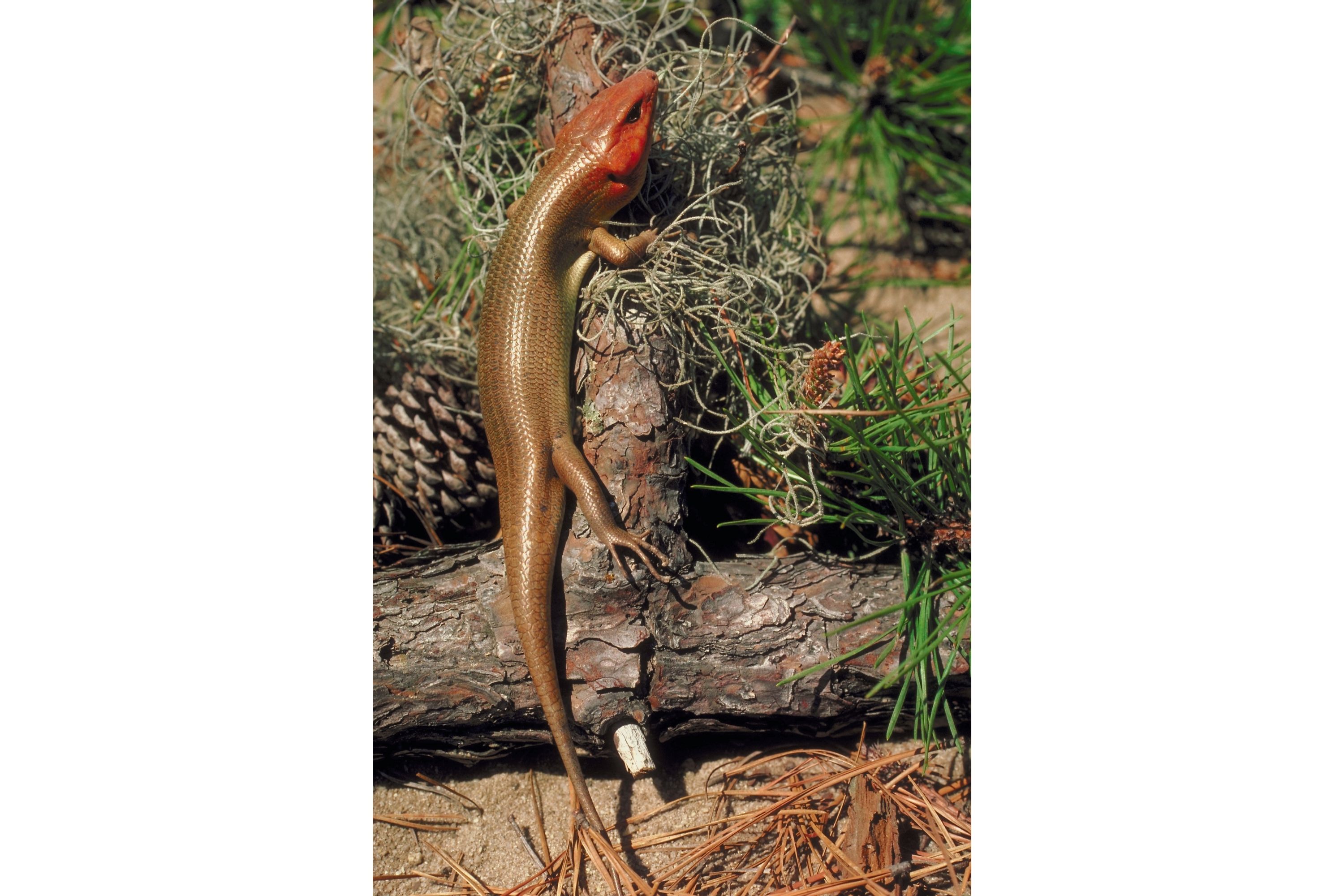Broadhead skink
(Plestiodon laticeps)

Description
The broad-headed skink or broadhead skink (Plestiodon laticeps) is species of lizard, endemic to the southeastern United States. The broad-headed skink gets its name from the wide jaws, giving the head a triangular appearance. Adult males are brown or olive brown in color and have bright orange heads during the mating season in spring. Females have five light stripes running down the back and the tail, similar to the Five-lined Skink. Juveniles are dark brown or black and also striped and have blue tails. Although they do occur in urban areas, their preferred habitat is humid forest areas with abundant leaf litter, especially oak forests. Broad-headed skinks are the most arboreal of the North American Plestiodon. They forage on the ground, but also easily and often climb trees for shelter, to sleep, or to search for food. Males typically are larger than females.The larger the female, the more eggs she will lay. Males thus often try to mate with the largest female they can find, and they sometimes engage in severe fights with other males over access to a female. The female lays between 8 and 22 eggs, which she guards and protects until they hatch in June or July. The hatchlings have a total length of 6 centimetres (2.4 in) to 8 centimetres (3.1 in). Plestiodon is a genus of lizards in the family Scincidae (skinks). The genus contains many species formerly classified under the genus Eumeces, except those now placed in Mesoscincus. They are secretive, agile animals with a cylindrical body covered with smooth, shiny scales. They are distributed from East Asia to throughout North America from southern Canada south to Mexico, including oceanic islands such as Bermuda. The conspicuous coloring of species of Plestiodon is a survival trait: it attracts a predator's attention to the tail of the animal, which will break off when grabbed. A skink thus often manages to escape and hide under some rock, log, or fallen leaves while the predator still contemplates the wildly thrashing severed tail. (This is an instance of what is called autotomy: voluntarily shedding a body part in order to escape, and later re generating the body part.) After the tail regenerates, it usually has the same color as the rest of the body and is typically shorter than the original tail. In some species, regrown tails are pinkish. A regrown tail has a cartilaginous rod for support instead of vertebrae.
Taxonomic tree:







